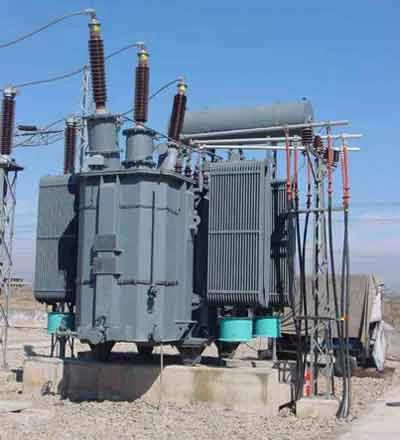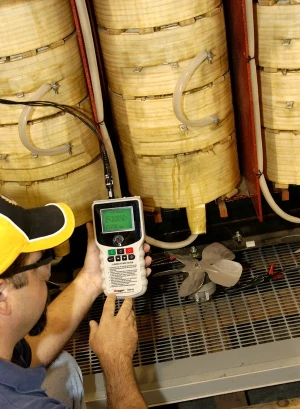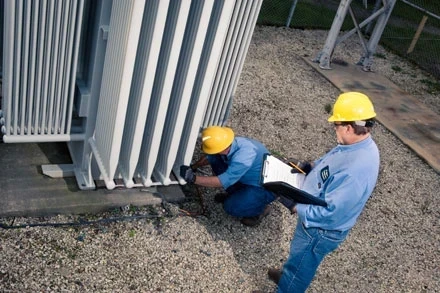Top 10 Common Reasons For Transformer Problems

Transformers, the silent giants of the electrical grid, play the crucial role of adjusting voltage levels to ensure electricity can be used safely and efficiently throughout the system. However, these essential pieces of equipment face various challenges that can impact their performance, lifespan, and the stability of the overall electrical system. To ensure reliable power delivery, it's vital to understand potential transformer problems and implement proactive maintenance strategies.
1. Overheating
Excessive heat is one of the leading causes of transformer failure. When transformers are overloaded, have inadequate ventilation, or face malfunctioning cooling systems, their internal temperatures can surge. This accelerates the breakdown of insulation materials, compromises the mechanical integrity of components, and puts the transformer at risk of catastrophic failure. Diligent temperature monitoring with thermal sensors is crucial, as is ensuring proper load management and sizing of transformers. Efficient ventilation systems, backup cooling, and the use of temperature alarms offer additional layers of protection. Regular oil analysis can also reveal hotspots or signs of deteriorating insulation, allowing for intervention before serious overheating occurs.
2. Insulation Deterioration
The insulation within transformers naturally degrades due to a combination of thermal, electrical, and environmental stresses. This degradation reduces its ability to electrically isolate components, leading to increased heat generation, the risk of partial discharge (localized arcing within the insulation), and eventually, failure. Regular oil testing is vital for identifying contaminants and byproducts that accelerate insulation breakdown. Temperature control systems (fans, coolers) help manage thermal stress, while surge arresters and voltage regulators minimize the impact of electrical surges. Visual inspections complemented by dissolved gas analysis in the insulating oil can reveal early signs of insulation problems, prompting timely maintenance or repair.
3. High Moisture Levels
Moisture infiltration is a significant threat to transformers. It severely compromises the dielectric strength of the insulating oil, speeds up insulation breakdown, and can even promote the formation of corrosive compounds that attack internal components. Frequent oil testing specifically for moisture content is essential. Maintaining proper seals and gaskets, using desiccants or breathers to control internal humidity, and installing moisture monitoring devices offer proactive defenses.
4. Corrosion
Both external and internal corrosion can drastically shorten a transformer's lifespan. External corrosion, often triggered by humidity, salt spray in coastal areas, or exposure to harsh chemicals, weakens the outer casing. Internal corrosion can stem from moisture infiltration, oxygen exposure due to leaks, and contaminants that degrade oil quality. To combat external corrosion, applying protective coatings and rust inhibitors proves effective. To limit internal corrosion, ensuring tight seals, maintaining gas blankets, rigorously maintaining oil quality, and conducting frequent visual inspections are all critical steps.
5. Overloading
Consistently overloading a transformer, pushing it far beyond its rated capacity, is a recipe for overheating and insulation damage, potentially leading to premature failure. Thorough load assessments are essential to ensure transformers are appropriately sized for the job. Regular monitoring of load levels, combined with load-shedding strategies during peak periods when necessary, can prevent overloading issues. Investing in transformer upgrades when load demands outgrow existing equipment is often the most reliable long-term solution.
6. Oil Contamination
Contaminated transformer oil loses its insulating and cooling properties, becoming a major liability rather than an asset. Moisture, particles, and other impurities degrade the oil's integrity, increasing the risk of overheating, partial discharge, and failure. Frequent oil sampling and testing, along with filtering and dehydration processes, are key to maintaining oil quality. Careful handling and storage of oil, along with ensuring transformers have proper seals and gaskets to prevent leaks and contamination, go a long way in protecting the health of this vital fluid.
7. Mechanical Damage
Impacts, vibrations from nearby equipment, improper handling during transport or installation, or external short circuits can all cause mechanical damage to a transformer's core and windings. Taking precautions such as providing robust housing with shock-absorbing foundations, ensuring adequate coil clamping, careful transportation and installation practices, and thorough post-incident inspections (think earthquakes, severe storms) help minimize the chances of mechanical damage. These measures protect the delicate internal structure of a transformer.
8. Partial Discharge
Partial discharge refers to localized electrical arcing within a transformer's insulation, caused by imperfections, voids, or contamination. Left unchecked, it can gradually erode the insulation, ultimately leading to complete failure. Employing specialized partial discharge testing methods helps to detect and pinpoint these issues early, allowing for timely intervention before they become serious threats. Investing in technologies for continuous partial discharge monitoring in high-value transformers provides an extra layer of protection.
9. Bushing Failures
Bushings are the insulated points where high-voltage conductors enter and exit the transformer. They are vulnerable to failures due to aging, contamination, or mechanical stress, potentially causing fires, explosions, and power outages. Frequent visual inspections, electrical testing, and preventative maintenance help spot early signs of bushing degradation, such as cracks, leaks, or discoloration. Replacing deteriorated bushings promptly is crucial for safety and the reliable delivery of electricity. Implementing technologies to monitor the condition of bushings adds another layer of defense.
Conclusion
Proactive maintenance and vigilant monitoring are vital for safeguarding transformers and ensuring a stable power grid. By understanding the common problems transformers face – from overheating to bushing failures – and by following best practices for prevention, we can mitigate risks, extend transformer lifespans, and promote a safer, more resilient electrical system. While these preventive measures require an investment of time and resources, the cost pales in comparison to the potential expenses and disruptions caused by unexpected power outages and equipment failures. Ultimately, dedicating resources toward a proactive approach to transformer care is an investment in the reliability and continuity of electricity, the lifeblood of our modern world.


